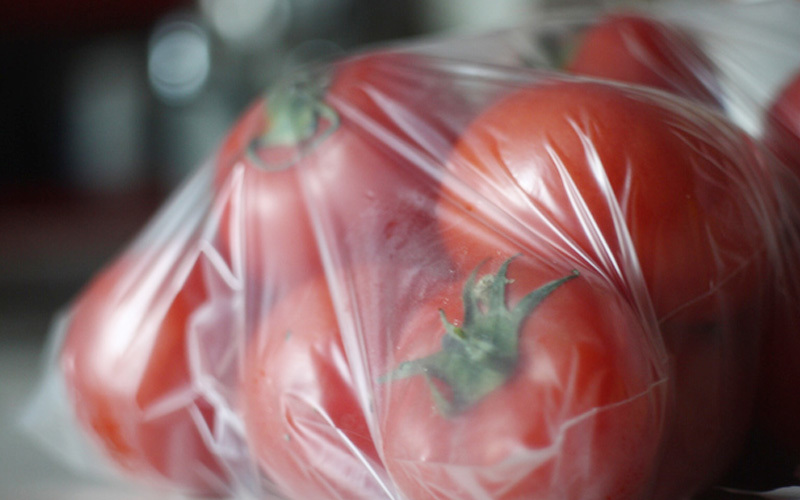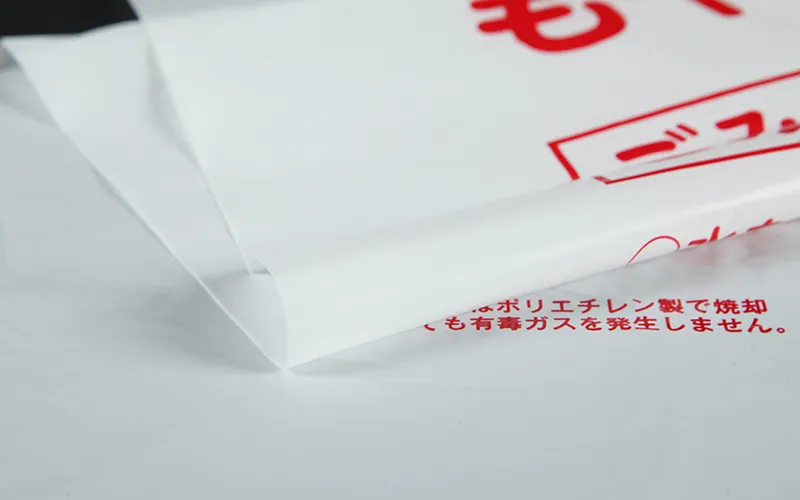What are the safety factors for supermarket grocery bags
2024-05-22
The safety factors of supermarket food bags are crucial, and are analyzed below in terms of materials, additives, production processes, and hygiene standards:
Material selection
Compliance with food safety standards: supermarket food bags are usually made of polyethylene (PE), polypropylene (PP), polyethylene terephthalate (PET) and other materials, which have good chemical stability, water resistance and hygienic properties, in line with the requirements of the relevant food safety regulations and standards. For example, PE material is non-toxic, odorless and harmless to human body, and is widely used for packaging all kinds of food.
Appropriate barrier properties: different foods have different requirements for the barrier properties of packaging. For example, fresh fruits and vegetables need packaging with a certain degree of permeability to maintain its respiratory effect, while oil and grease foods need packaging with good oil resistance to prevent oil and grease seepage and oxidation.PET material has good barrier properties, can effectively prevent oxygen, water vapor and other substances from entering the interior of the package, to prolong the shelf life of the food.
Additive use
Strictly control the type and amount of additives: in order to improve the performance of food bags, such as improving flexibility, heat resistance, anti-aging, etc., the production process may add some additives, such as plasticizers, antioxidants, stabilizers, etc.. However, these additives must comply with the provisions of the relevant food safety standards, and their types and dosages are strictly controlled to ensure that they do not cause harm to human health. For example, there are strict restrictions on the use of plasticizers in food packaging, and the use of some plasticizers that may interfere with the human endocrine system is prohibited.
Avoid the use of harmful additives: Some additives that may be harmful to human health, such as certain heavy metal salts and aromatic amine compounds, are strictly prohibited in the production of food bags. These substances may migrate into the food and cause potential harm to the human body, such as carcinogenic, teratogenic and mutagenic.
Production process control
Clean production environment: The production process of food bags needs to be carried out in a clean and hygienic environment to prevent impurities, dust, microorganisms and other contamination of food bags. The production workshop should have good ventilation, dust removal and disinfection facilities, and the operators should wear clean working clothes, gloves and masks, and comply with strict hygienic operating procedures.
Strict control of production process parameters: The temperature, pressure, time and other process parameters in the production process have an important impact on the quality and safety of food bags. For example, in the blow molding process of plastic film, if the temperature is not properly controlled, it may lead to unstable performance of the film and even produce some harmful substances. Therefore, the production process parameters need to be strictly controlled to ensure the quality and safety of food bags.
Hygiene standards and testing
Follow the relevant health standards: Supermarket food bags must comply with the relevant national and local health standards, such as “General Safety Requirements for Plastic Materials and Products for Food Contact”. These standards have clear regulations on the physical properties, chemical properties and microbiological indicators of food bags to ensure that the bags will not cause contamination of food in the process of use.
Regular testing and inspection: In order to ensure the quality and safety of food bags, manufacturers need to regularly test and inspect their products, including the inspection of raw materials, semi-finished products and finished products. At the same time, supermarkets and other use units should also be regularly on the purchase of food bags for sampling, to ensure that they meet the relevant standards and requirements. Testing items include appearance, size, physical properties, chemical properties, microbiological indicators, etc.
Key words:
RELATED INFORMATION
How to distinguish the material of food plastic bags?
2024-01-30
What is the difference in oil resistance of food plastic bags with different materials?
2024-01-30
What are the materials of plastic garbage bags?
2024-01-30






